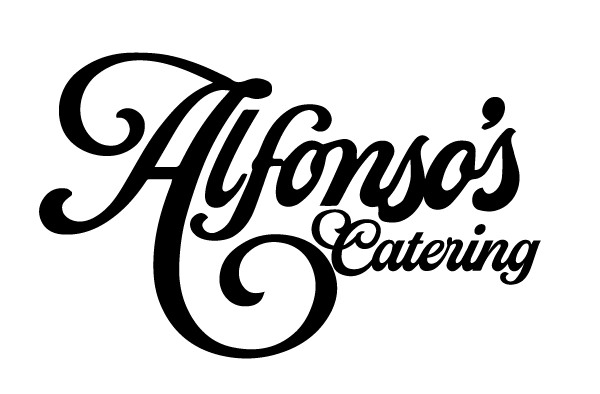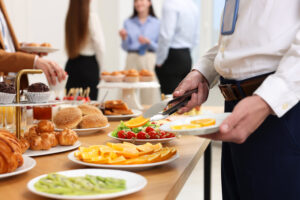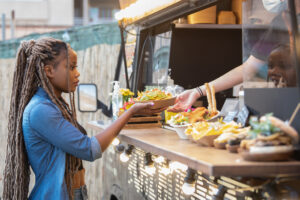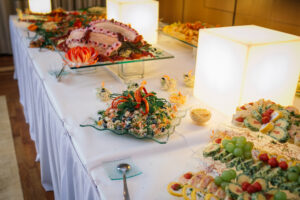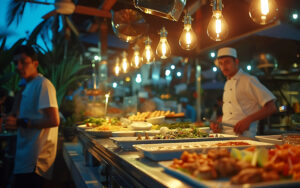Twenty floors above Manhattan, I’m watching a CFO close a multi-million dollar deal over a plate of perfectly seared scallops.
The client—initially hesitant—is now animated, discussing expansion plans while savoring each bite.
This isn’t coincidence.
As a culinary director who’s orchestrated everything from Wall Street breakfast meetings to Fashion Week afterparties, I’ve seen firsthand how the right food transforms business interactions in this relentlessly demanding city.
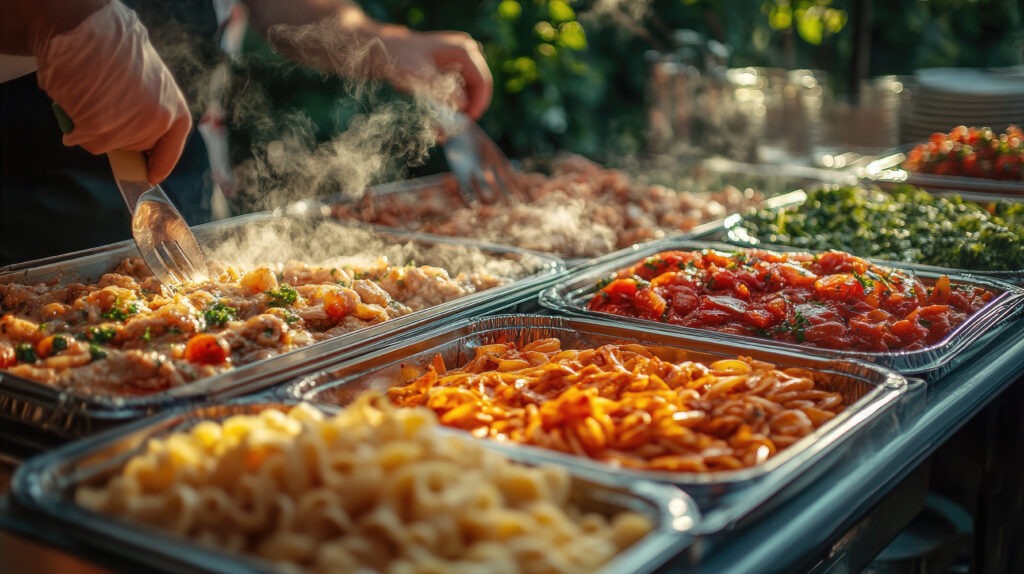
A Delicious And Inviting Culinary Experience
When Boardrooms Become Culinary Theaters
Let’s be honest about corporate boardrooms: they’re designed to intimidate. The long mahogany tables, the leather chairs, the muted palettes—everything signals “serious business happens here.” These spaces weren’t built with memorable dining in mind, which is precisely why food becomes so transformative within them.
Last month, a tech startup asked me to reinvent their investor meetings, which were getting lost in the sea of pitch sessions filling investors’ calendars. We scrapped the expected coffee and pastries, replacing them with an interactive breakfast where small bites arrived synchronized with each section of their presentation. As they discussed market expansion, servers silently delivered miniature global street foods reimagined with premium ingredients. The tactile experience created memory anchors for each talking point.
“Your presentation was the only one from last week that my partners are still talking about,” one investor emailed afterward. The term sheet followed three days later.
Breaking Psychological Barriers Through Shared Plates
The most successful boardroom events acknowledge the psychological dynamics at play. When negotiations stall or presentations feel flat, shifting to family-style courses can dissolve tension that formal plated service sometimes reinforces.
I’ve watched rigid body language soften as executives reach across the table to share dishes, creating natural moments of connection. During one particularly tense merger discussion, the breakthrough came when both CEOs reached for the last piece of black truffle flatbread simultaneously—the unexpected moment of humor reset the room’s atmosphere entirely.
Rooftops: Where Nature Dictates the Menu
If boardrooms challenge us to inject life into controlled environments, rooftops demand we surrender some control to nature while maintaining culinary precision. After a gust of wind once sent a tower of seafood canapés sailing over the edge of a Tribeca rooftop (narrowly missing pedestrians below), I developed what our team calls “wind-tested menus.”
The Fifth Taste Element: Atmosphere
On rooftops, atmosphere becomes literally and figuratively another ingredient. A dish that sings in a climate-controlled dining room can fall flat under direct sunlight or in swirling wind. I now design rooftop menus considering not just taste, texture, temperature and appearance, but also atmospheric resilience.
Last summer’s heat wave taught us brutal lessons. At a Financial District rooftop launch party, we pivoted from our planned menu to compressed watermelon skewers with lacto-fermented hot sauce and frozen coconut cream—items that improved rather than deteriorated in the heat. When temperatures hit 98 degrees, guests were still raving about the food rather than retreating to air-conditioned interiors.
Reimagining Industrial Spaces Through Culinary Context
Brooklyn’s warehouse venues present a different challenge entirely. Their raw, unfinished quality begs for food with similar authenticity—dishes with visible craftsmanship rather than precious styling.
For a product launch in a former sugar refinery, we created stations where guests could witness food transformation mirrors the space’s industrial history: salt-block curing, live fermentation, and real-time smoking. The tactile honesty of these preparations resonated perfectly with the exposed brick and visible ductwork.
Narrative Through Neighborhood
The most successful warehouse events embrace their geographic context. When catering in Sunset Park’s Industry City, we draw inspiration from the neighborhood’s immigrant history and current maker culture. This means collaborating with local producers and telling their stories through each dish.
When a client initially requested “standard upscale catering” for their Greenpoint warehouse event, we gently pushed back, instead proposing a menu that reflected the neighborhood’s Polish roots and contemporary artist community. The resulting pierogi station—featuring traditional fillings alongside unexpected combinations like braised short rib with black garlic—became the night’s most photographed element.
The Unifying Element Across All Venues
Whether designing for leather-chaired boardrooms or industrial concrete floors, the most successful event cuisine shares one quality: thoughtful intentionality. Food that merely feeds is a missed opportunity. In New York’s competitive landscape, memorable events use cuisine to reinforce message, enhance environment, and create experiences that linger long after the plates are cleared.
In a city perpetually racing forward, the right food doesn’t just pause time—it transforms it.
